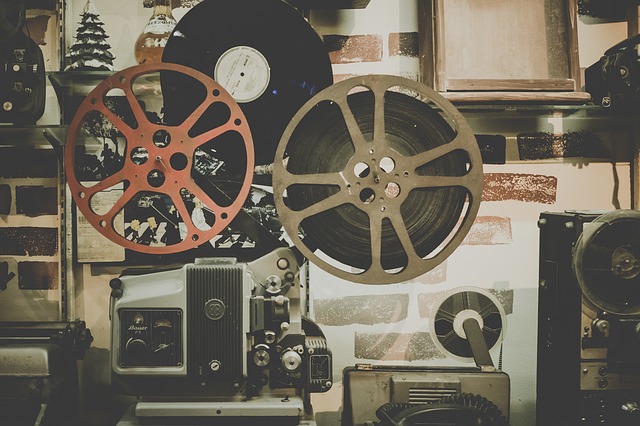Storytelling is our most powerful form of communication ever invented. Whether it’s the latest Hollywood blockbuster, or a team or investor presentation, stories provoke our emotions. Stories help us feel something towards the person telling the story, i.e. the presenter (that’s you), which helps create connection, credibility and trust – an absolute essential if you want to stand out in today’s competitive business world.
Present a Hollywood blockbuster
Any presentation you put together should read like a good movie – it needs to have creative visuals, a compelling script, music, rhythm and heroic characters. All these elements come together and make your audience feel something, an emotion – excited, sad, angry, even apathetic.
Yet, in business, we’ve been taught that emotion (something that comes naturally to us women) is inappropriate. We’ve been told that problem-solving and decision making should rely on our logic and analysis. This simply isn’t true.
It has long been noted that rational decision making – for the most part – is largely a myth. This is because up to 90% of the thousands of decisions we make each day fall beneath our level of awareness and are reinforced through our feelings and emotions. In fact, studies have shown that 74% of participants changed their decision after their emotion was changed.
A compelling blockbuster, therefore, needs to have a solid structure and stories that are easy to follow. It needs to have lots of signposts that lead your audience through on a journey with you. Show them the difference between life without your product or service compared to life with your help.
Amy Cuddy’s Ted talk, ‘Your body language may shape who you are’, is a perfect example of how you balance facts with that emotional pull. If you don’t know it, then have a look and pat attention to her screen visuals, gestures and the emotion she uses to draw you in.
Structure your story
Master communicator Nancy Duarte spent two years reading mythology, philosophy, and researching screenwriting and other story methodologies that have stood the test of time. In the course of her research, she uncovered a structure that some of the world’s greatest communicators had been using for years (including Aristotle).
It’s called ‘Persuasive Story Form’. This structure takes your audience back and forth between ‘what is’ (current state) and ‘what could be’ (the future world with your idea). You can use it for everything, from a movie script to your latest presentation.
Beginning: ACT I
- Have an honest conversation about the reality of the situation
- Give them a glimpse at the solution – with your idea.
Middle: ACT II
- Create tension and contrast for your audience
- Use a balance of emotional and analytical insights.
End: ACT III
- Begin with your call to action, what you want your audience to do
- Finish with an inspiring description of the world with your idea in place
- Ensure they leave committed to taking action.
To see this in practice then take a look at Nancy Duarte’s ‘The Secret Structure of Great Talks’ – you won’t regret it!
Make it memorable
If the goal of any presentation is to influence your audience (which it is), then you need to balance information with logic and emotion in a way that they remember your message and are driven to act upon it at the end. This is how what you are delivering can become meaningful and unforgettable.
Any time you present, it is your opportunity to influence the way those in the room think and act. So you’ve got to make them want to do something other than run or sleep. Should they feel angry and compelled to act now? Or excited about your new vision or idea?
To help, choose images, photos, and even colours, that match that mood. Then use relevant stories to connect one-to-one with them, so what you’re saying and showing becomes not only memorable, but meaningful as well.
I’ve seen video used really effectively in presentations, like a close up visual of an eye, something that is such high resolution you just want to reach out and touch it.
This is your chance to share not just your point of view, but also your passion for your subject, so let that shine. (Editor’s note: Learn how to change the world with your stories!)
Above all else, remember, the ability to bring emotion and heart to your subject is, for most of us, an innate skill. And when you balance this with logical arguments, then you create the opportunity to be remembered long after the lights go down. Just try it and see.
 Emma Bannister is passionate about presenting big, bold and beautiful ideas. She is the founder and CEO of Presentation Studio, APAC’s largest presentation communication agency, and author of the book ‘Visual Thinking: How to transform the way you think, communicate and influence with presentations’. Visit www.presentationstudio.com
Emma Bannister is passionate about presenting big, bold and beautiful ideas. She is the founder and CEO of Presentation Studio, APAC’s largest presentation communication agency, and author of the book ‘Visual Thinking: How to transform the way you think, communicate and influence with presentations’. Visit www.presentationstudio.com




 Andrea Landris is a professional portfolio writer and career move coach and the self-proclaimed Carrie Bradshaw for Millennial power women in the corporate workplace. She is authentically storytelling her way to the top and determined to change the young professional game by helping Millennial women everywhere do the same.
Andrea Landris is a professional portfolio writer and career move coach and the self-proclaimed Carrie Bradshaw for Millennial power women in the corporate workplace. She is authentically storytelling her way to the top and determined to change the young professional game by helping Millennial women everywhere do the same.